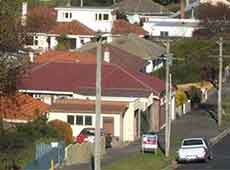Practical advice for homeowners and landlords on meth testing

Since the methamphetamine testing scam was unequivocably busted in mid-2018, we’ve continued to receive calls from people unsure if they still need to test for methamphetamine residue, or what to do if a test comes up positive. And what it means for their insurance.
The news is good: unless methamphetamine has been smoked heavily in your house or the property has been used as a laboratory for manufacture, you don’t need to worry about the health effects. There’s absolutely no evidence in any medical literature anywhere that people can be harmed by third-hand exposure to methamphetamine residue on surfaces.
Nevertheless, some people are still worried about health risks. If you are unsure, then give the walls and furnishings a good clean. Any standard detergent will do. Methamphetamine residue dissipates over time, so give the place a good airing out.
What the report said
The Prime Minister’s Chief Science Adviser Sir Peter Gluckman published a report in May, on health risks linked to the presence of methamphetamine residue on walls, flooring and other surfaces. Previous maximum levels had been set far too low to be applied for screening of all houses, he said. Houses with methamphetamine residues at such low levels did not represent a health risk that required remediation.
He advised raising the threshold for initial screening ten-fold, to 15 mcg per 100cm2. That means very few properties will now be deemed ‘contaminated’. Housing NZ immediately adopted the new guide levels, and up to 240 state houses were released for use.
Methamphetamine can be harmful to those who use it, and potentially to others (especially children) who live with them while they are using. Manufacturing methamphetamine in a house can also damage the health of inhabitants, due to the toxic chemicals that are sometimes used in the manufacturing process.
When you do need to test
Based on Sir Peter Gluckman’s report, you only need to test your property if the police have advised you it was used to manufacture methamphetamine, or if you have good reason to suspect very heavy use in the property.
The Chief Science Adviser recommends an initial screening method called a rapid test, which can be purchased online and carried out by any home owner. The tests available in New Zealand unfortunately measure methamphetamine residue at a very low level (between 0.5 mcg and 1.5 mcg / 100 cm2), so they will serve as an initial indication only. However, they can indicate if any room in the house needs further investigation.
If you go ahead with professional testing, and this shows methamphetamine residues at higher concentrations than 15 mcg/100 cm2, use the NZS 8510:2017 standard as a guide for remediation. Porous materials such as furnishings and carpets will probably need to be removed, and all contaminated surfaces should be thoroughly cleaned. The standards set the safe level of residue after remediation at less than 1.5mcg/100cm2, to ensure any other toxicants have also been removed.
The Chief Science Adviser’s report strongly recommends avoiding “composite field tests”. These combine the readings from multiple swabs and add them together. Composite field tests do not accurately reflect levels of risk, and can lead to false impressions of high exposure.
Chances of contamination very low
Be reassured, the chances that your house was used as a meth lab are very low. ESR tested 1600 public sector houses that were suspected of being contaminated, and of over 13,000 swab samples, only 1% revealed high enough levels to indicate areas where manufacture had likely taken place.
While the chemicals used in manufacture are very dangerous, evidence shows New Zealanders commonly use a sealed pressure vessel - which minimises the release of associated fumes and contaminants. Toxic metals such as lead and mercury, reportedly used in other countries, have not been found in New Zealand labs.
And what’s more, the Chief Science Advisor has pointed out the conservative nature of the guidelines:
“There are two important points to be noted about all of the remediation guidelines as a whole. First, from a health perspective, none should be interpreted as a specific ‘threshold’ that if exceeded – and particularly by a small margin – is likely to result in an adverse effect…. they are deliberately based on factors assuming ‘worst case’ scenarios that are unlikely to reflect a real world situation.”
Insurance implications
While the health implications are very clear, the implications for the insurance industry are a bit less certain. So if you’re a landlord we recommend you check whether your insurance company has a policy on testing, and follow their advice to limit your liability.
PM Jacinda Adern has ruled out compensation for private landlords who got caught up in the scam, saying there was never any obligation for them to undergo testing – it was a panic fuelled by the meth testing industry, and “the science just wasn’t there”.
We expect new regulations guiding methamphetamine testing to be developed soon.
Read the Prime Minister's Chief Science Advisor's report on methamphetamine contamination in residential properties
News story, 14 June: Methamphetamine testing reset: where are we at?
Recent news

Beyond the bottle: Paddy, Guyon, and Lotta on life after alcohol
Well-known NZers share what it's like to live without alcohol in a culture that celebrates it at every turn

Funding boost and significant shift needed for health-based approach to drugs
A new paper sets out the Drug Foundation's vision for a health-based approach to drug harm

Expert Pharmac committee recommends funding for overdose reversal nasal spray
The expert committee has said funding for naloxone in the community should be a high priority

